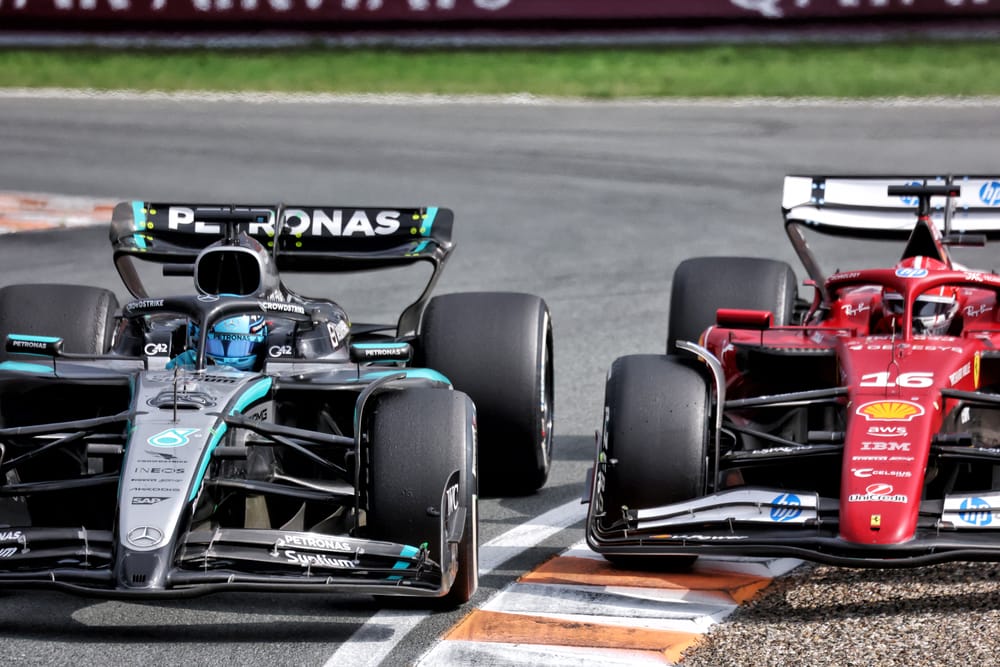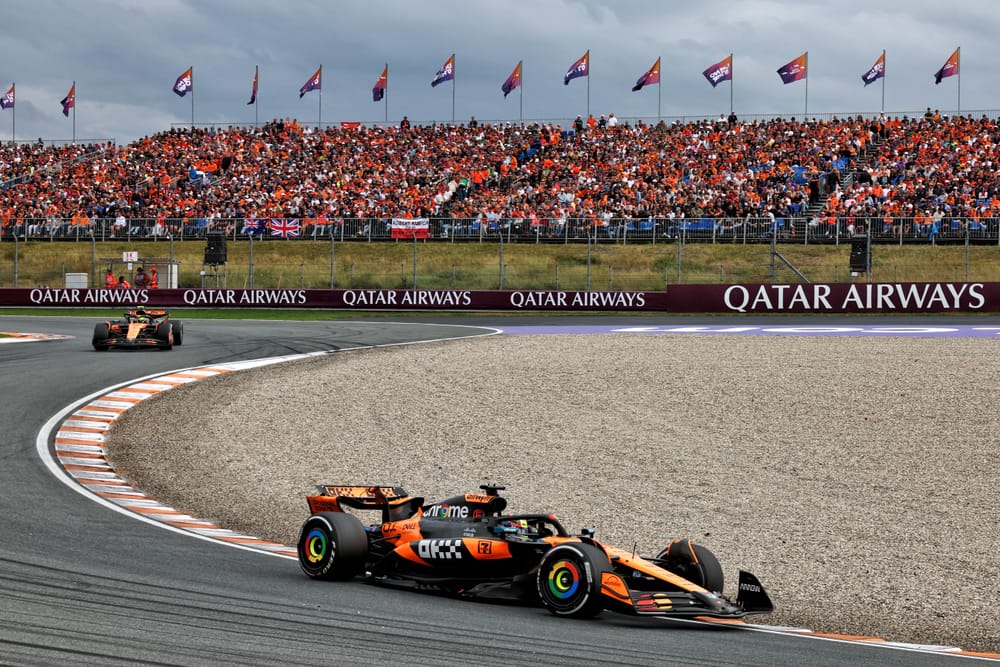A dramatic Dutch Grand Prix led to a big swing in the title fight and several breakthrough results elsewhere - so here’s everything we learned from Zandvoort.
McLaren responsible for title swing
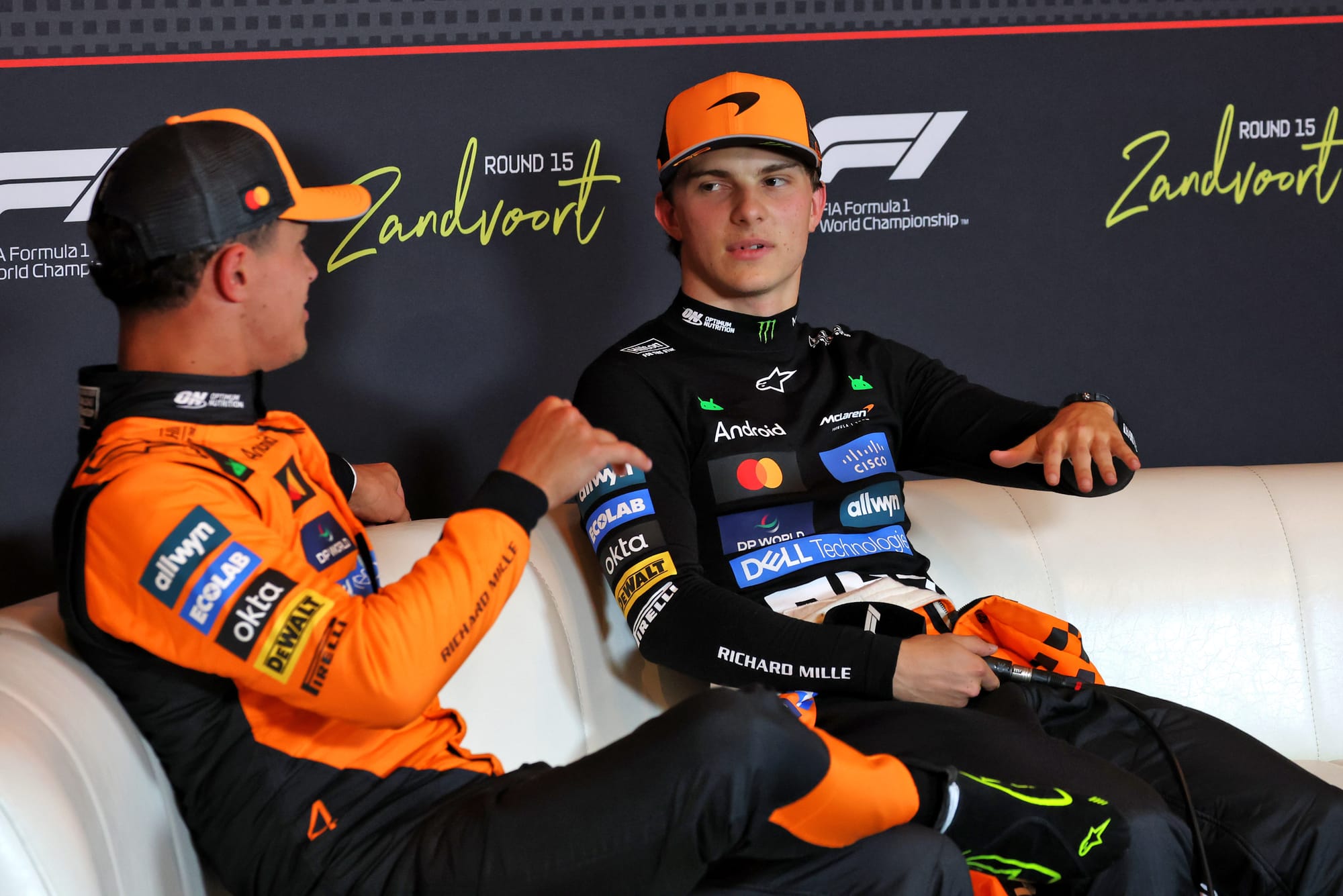
If a small swing on Saturday hadn’t gone against Lando Norris, then the big one on Sunday would have been even more painful.
Gusts of wind were a significant variable throughout qualifying at Zandvoort and one on the start-finish straight in Q3 made enough of a difference for Norris to lose pole to Oscar Piastri by just 0.012s.
That looked set to consign Norris to defeat, given how important track position is at this circuit, especially in equal machinery. It was a sign of the tiny margins that Piastri has worked extremely hard on this year and put himself in position to benefit from.
But had Norris grabbed pole, he’d have still suffered a more tangible and costly swing on Sunday, as where he started seemingly had no bearing on the car-related technical problem that forced his retirement.
It’s a shame that a 34-point gap has now opened up instead of a 16-point one because of a mechanical issue, which was on the McLaren side rather than engine partner Mercedes. Beyond that, nothing has yet been confirmed.
McLaren’s reliability record has been very good in recent years, but it will need to identify the cause and prevent a repeat as a matter of urgency.
Because it has inadvertently caused the first major shift in the title fight since it became a clear two-horse race - one that until now has been swinging back and forth by just a few points almost every weekend.
Hadjar’s closer to Red Bull seat
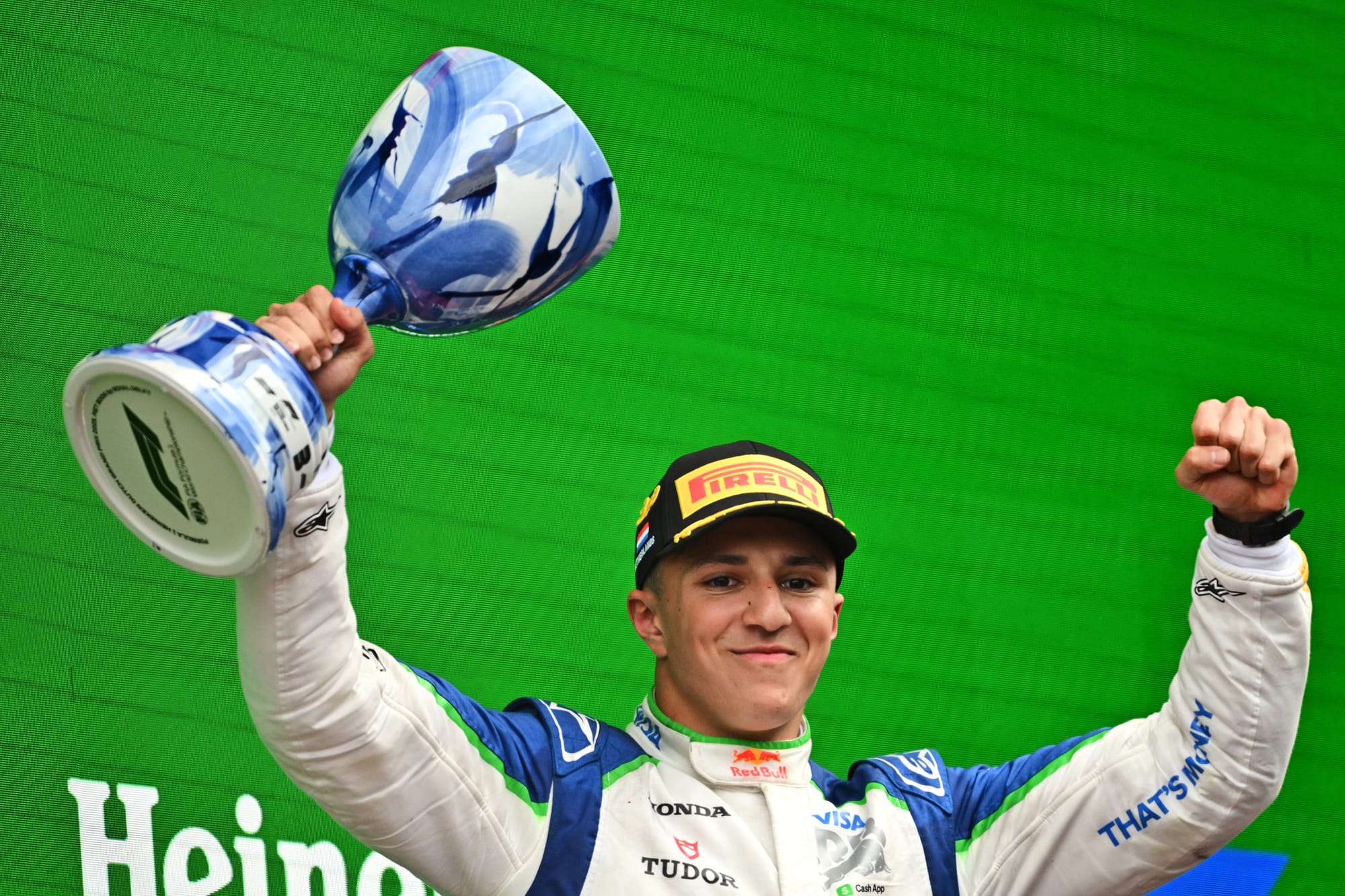
A first F1 podium for Isack Hadjar has come at the perfect time to help cement a Red Bull Racing seat next season - which is edging closer.
This weekend, Hadjar was right at the top end of the potential we’ve already seen several times in his rookie season.
He qualified excellently, held off Charles Leclerc’s Ferrari, and easily handled late pressure with a maiden podium on the line.
Such a big result is a very obvious signpost of his ability, and can be a great case study to make the argument that Red Bull could or should promote him to replace Yuki Tsunoda next season.
But Red Bull was already considering that anyway. Tsunoda’s been unconvincing - more on that later - while Hadjar has been performing so well that the doubts about him from his junior career and his F1 inexperience don’t feel like doubts anymore.
Red Bull team boss Laurent Mekies says one result won’t determine Red Bull’s choice: “Why would you put yourself under pressure based on one result or another?”

And it’s worth stressing that podiums for the second team have never been a guarantee of success at Red Bull Racing. But Hadjar can’t make a stronger case than the one he’s putting together this season.
Big flaw in racing rules
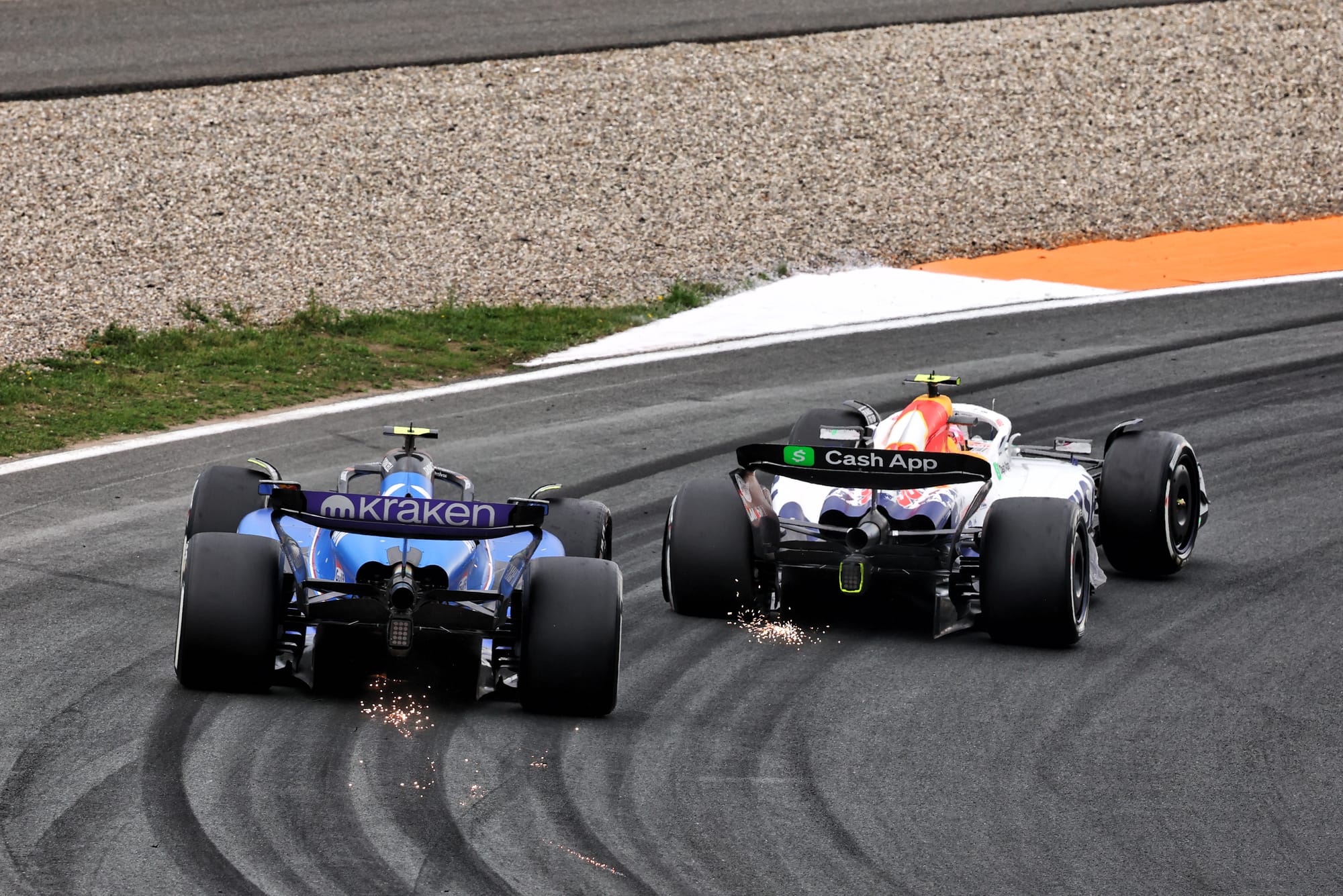
It was already clear that F1’s revised racing guidelines gave more power to the car on the inside of a corner this year - and basically permitted them to do pretty much anything if they got ahead at the apex and kept their car on the road.
Zandvoort featured a case study that seemed to indicate drivers can go even further, though.
Liam Lawson’s wobble into Carlos Sainz at Turn 1, which caused contact and punctures for both cars and ruined their race, was not only deemed not Lawson’s fault but ended in a penalty for Sainz.
If that had been ruled a racing incident, it would probably not have been incendiary at all. It is easy to justify Lawson escaping punishment with or without the guidelines.
But the rules have a big flaw if this kind of contact leads to a penalty for Sainz. It feels like an unintended consequence of the new guidelines - or worse, that the stewards were reacting to the outcome and felt a penalty had to be awarded.
A very hard Charles Leclerc/George Russell fight involved some contact and got brushed off as a racing incident, after all.
Ferrari day so bad it hurt Monza
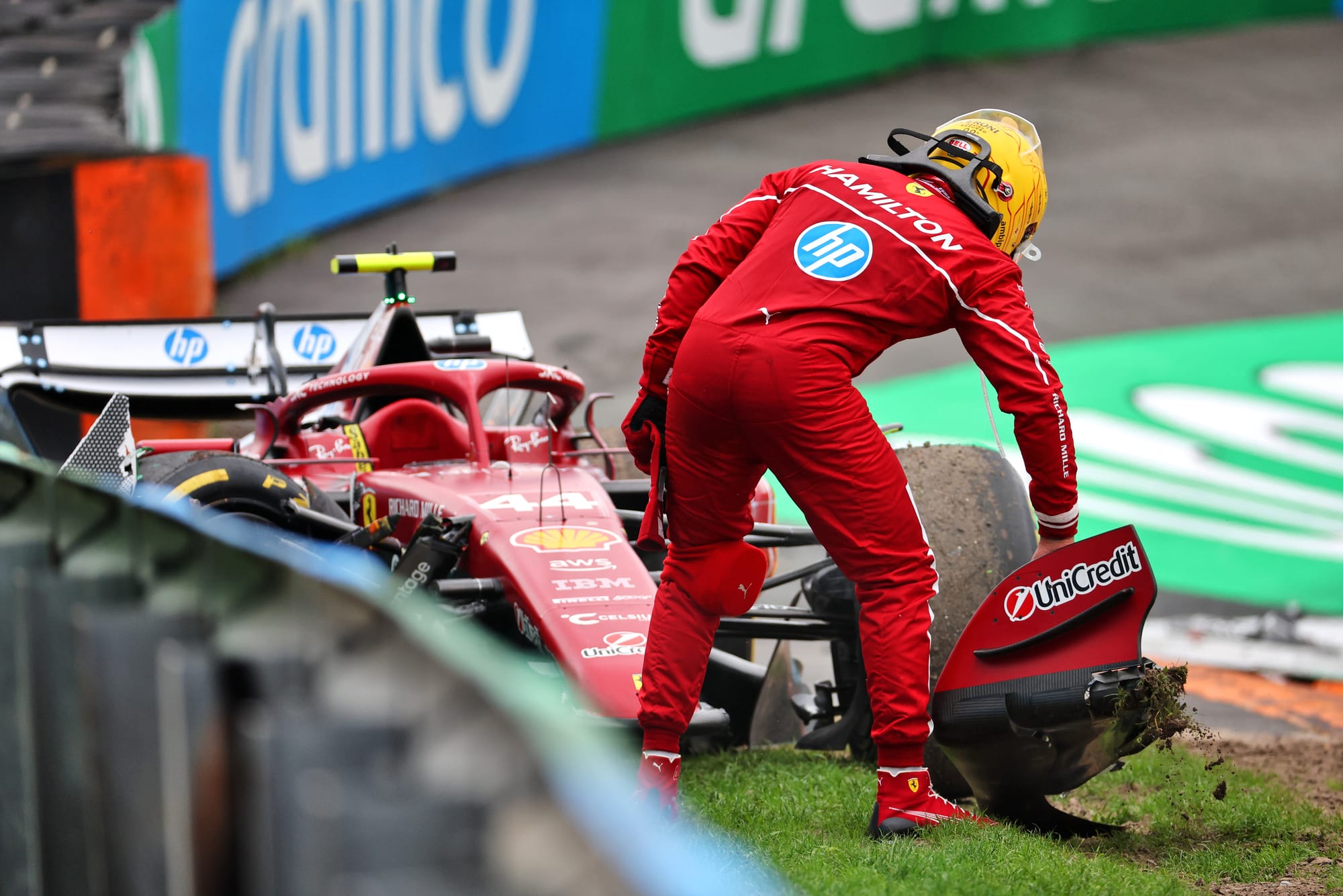
It was bad enough for Ferrari that both its cars crashed out of the Dutch GP at the same corner in very different ways.
But its Sunday was so bad it’s already hurt Ferrari’s upcoming home race at Monza, with Lewis Hamilton picking up an unusual penalty.
Way before Hamilton ran wide at Turn 3 and tore off the front right corner of his car at Turn 3 - before the race had even begun, in fact - Hamilton committed an offence that’s earned him a five-place grid drop for the Italian Grand Prix.
As he returned to the pits at the end of a reconnaissance lap, Hamilton failed to slow sufficiently for the double-waved yellows that were in effect at the final corner for safety reasons on laps to the grid.
Such an unnecessary and odd penalty summed up a miserable day for Ferrari, which also had to watch Charles Leclerc’s race end at the same turn as Hamilton when Kimi Antonelli’s lunge went badly awry.
$50m+ fight changed again
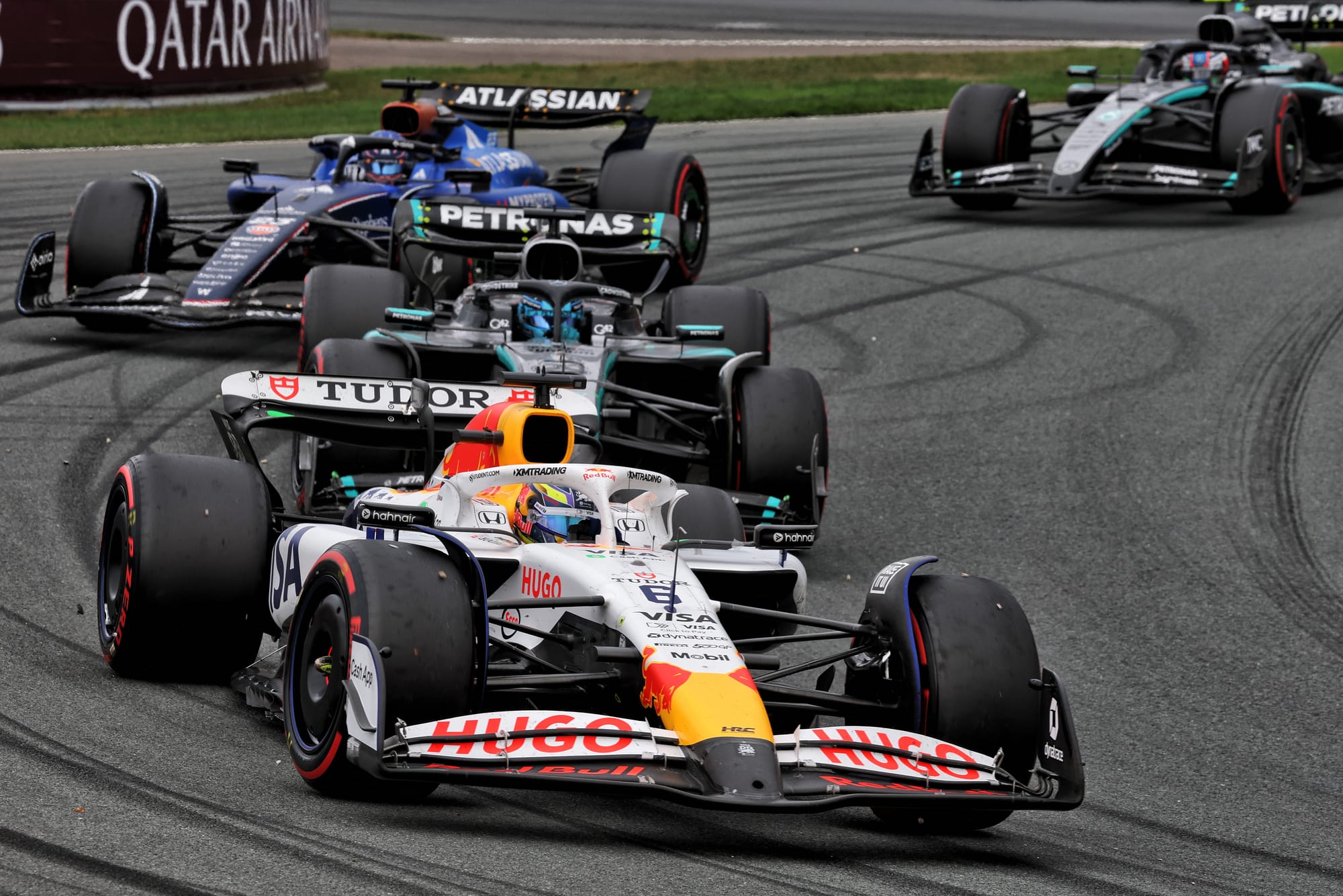
For the third race in a row, the order of the teams chasing Williams has changed - with Aston Martin now ahead of Racing Bulls after Red Bull’s second team jumped Sauber in the constructors’ championship.
This might sound quite literally like middling teams fighting over middling positions but it’s a fascinating contest with a huge amount at stake - over $50million in fact.
Each place in the championship is worth over $10million and there’s potential for pretty much every midfield team to land a massive result if the stars align.
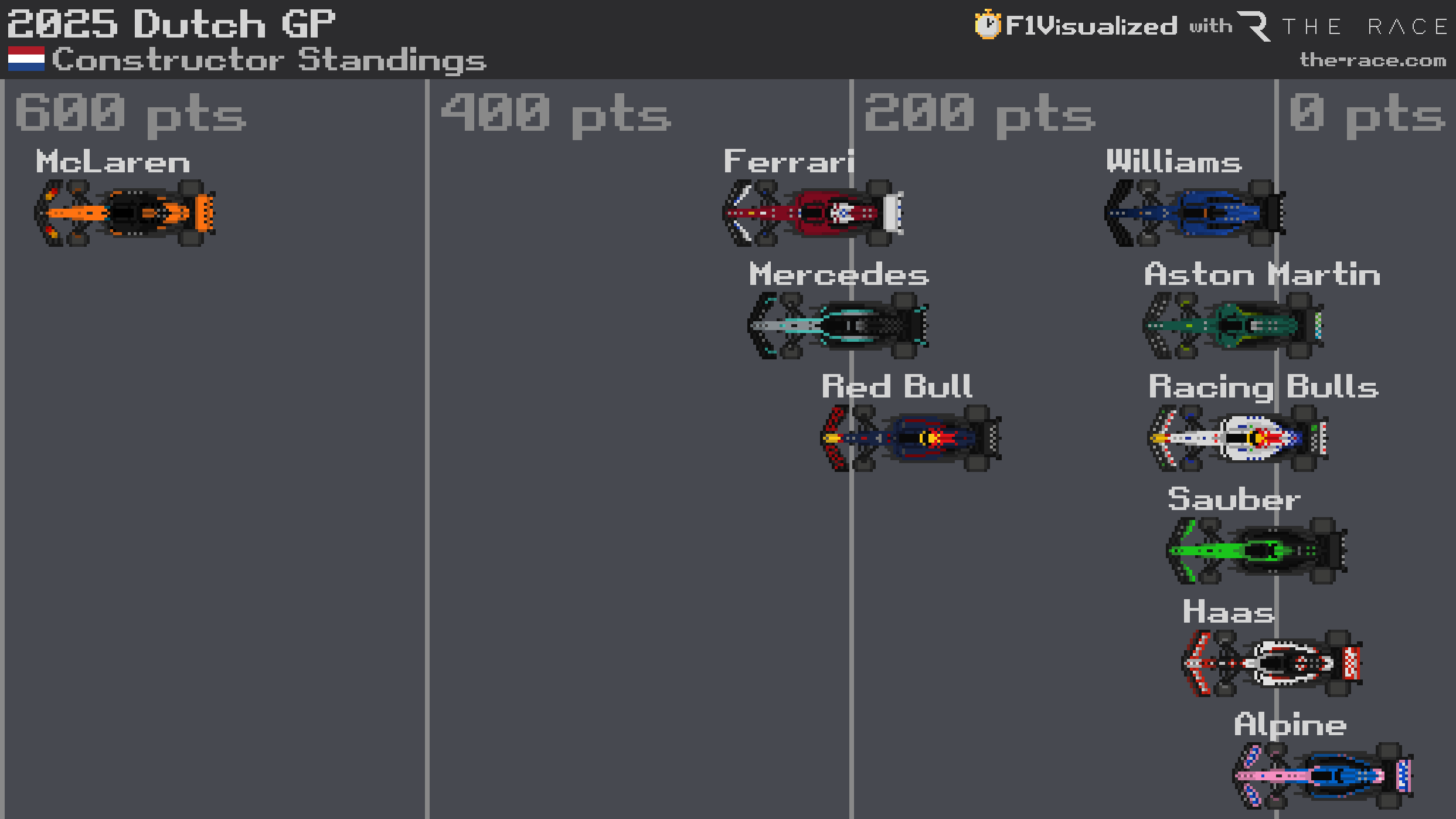
Even Williams isn’t really safe in fifth, but the big fight is between the teams behind - which also includes Haas with only Alpine cut adrift.
A great rescue job from Aston Martin, which scored points with both cars despite running 13th and 18th on the first lap, keeps it at the head of the pack for now but Hadjar’s podium has revitalised Racing Bulls - which might actually be the most dangerous team of that whole group.
The longest drought is over
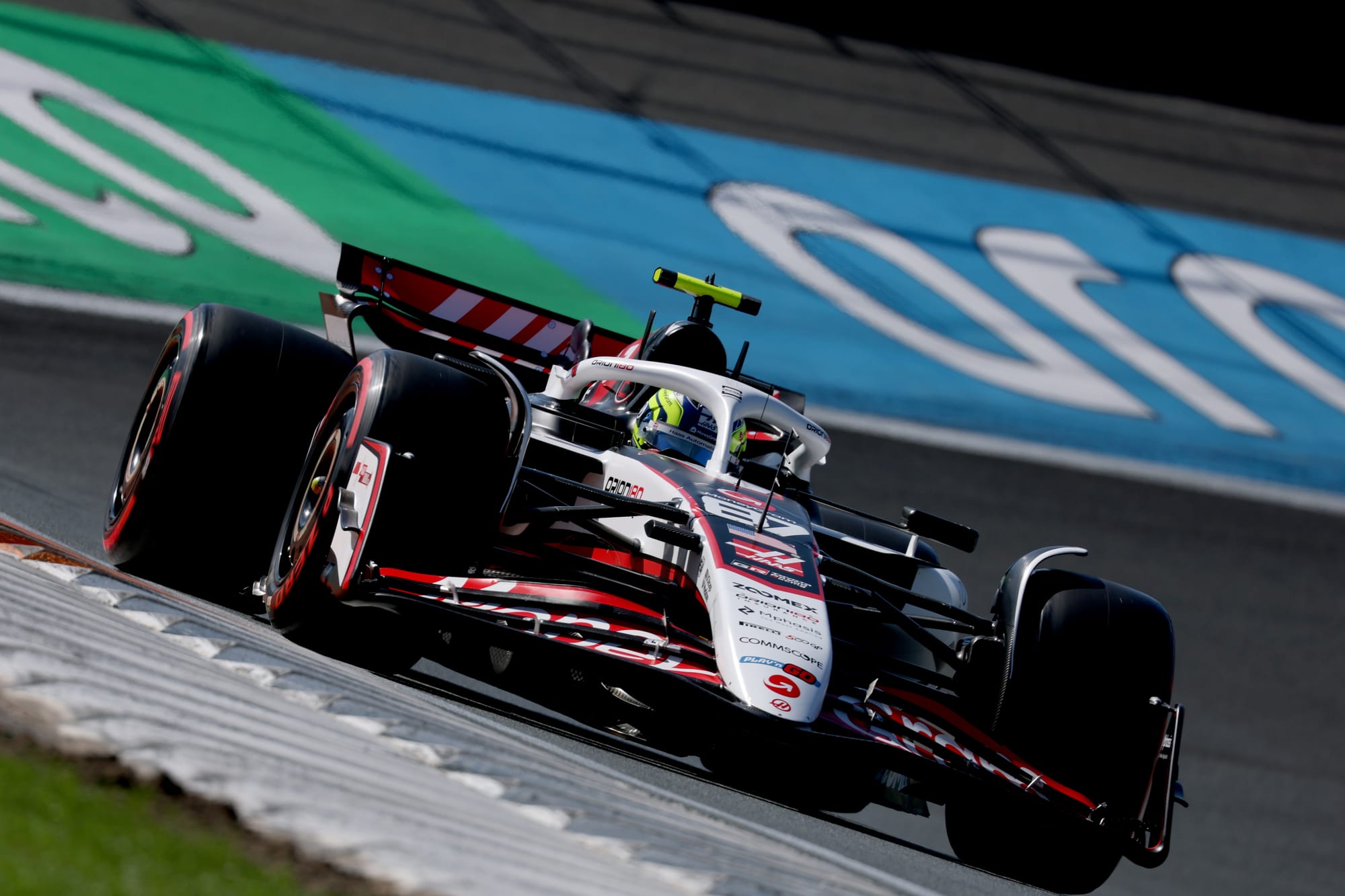
For all the obvious speed that Ollie Bearman has shown in his first full season in F1, he has had far too many promising weekends where he has missed out on points.
Now he has had the complete opposite, with sixth place at Zandvoort his first points finish in a grand prix since April’s Bahrain race, and his best ever F1 result, despite starting in the pitlane.
Spa sprint race aside, it has been a surprisingly barren Sunday run for Bearman, the longest of any driver, but sixth in the Netherlands emphatically ended that drought.
Bearman and Haas were frustrated that more potential seemed to be going unfulfilled at Zandvoort, where he and team-mate Esteban Ocon were the two slowest cars in qualifying.
That led to a tactical engine change on Bearman’s car and a strategy gamble - starting on hards, the first safety car came too early to pit, so Haas kept both cars out.
Ocon and Bearman ran around the foot of the points positions as a result and when further intervention came it allowed them to make their remaining mandatory pitstops for free - and as the cause of those interventions were the dramatic eliminations of several cars ahead, it vaulted both Haas drivers into the top 10.
Tsunoda now worst full-time driver
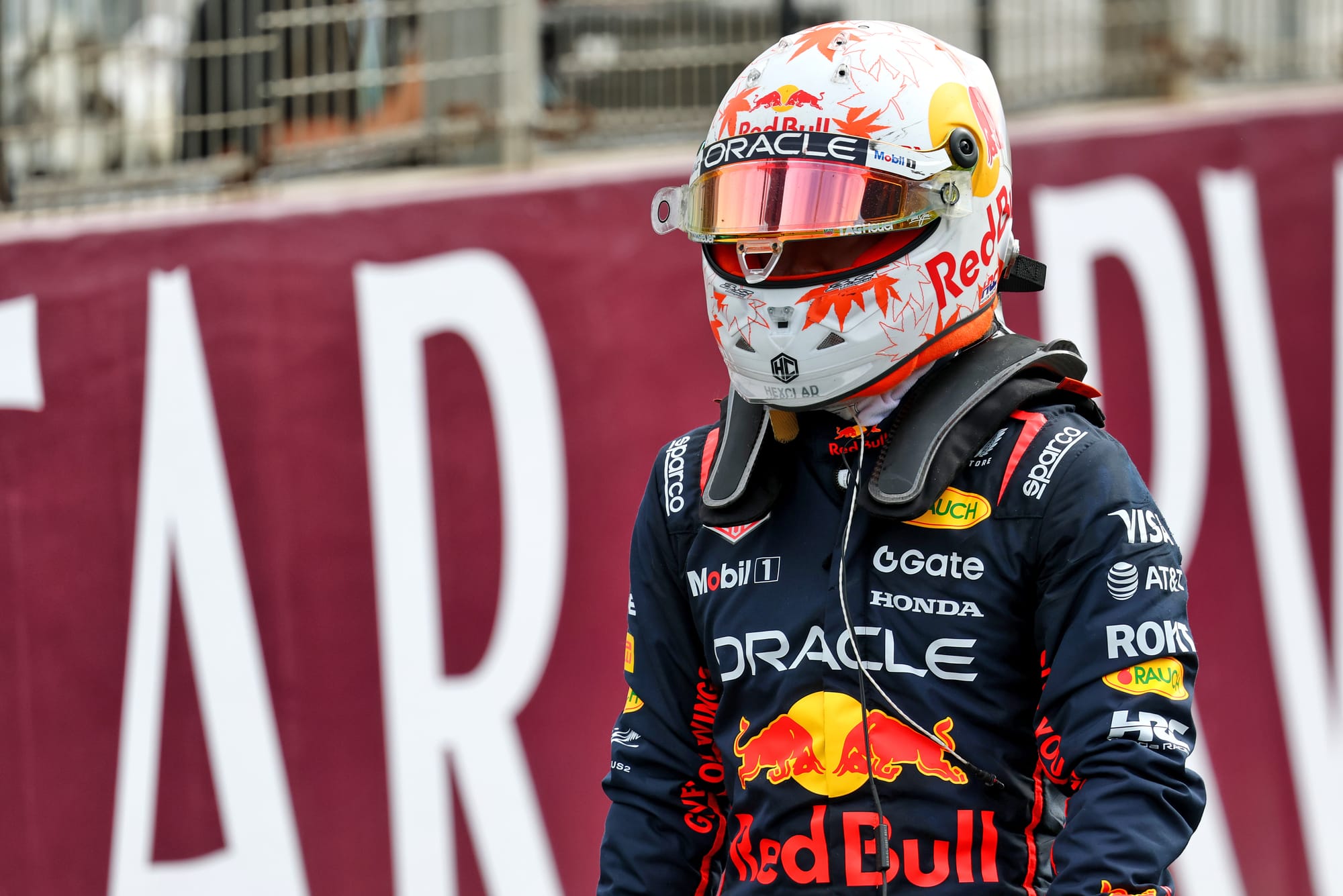
So much misfortune befell drivers who should have scored points that Yuki Tsunoda was able to overcome a mid-grid start and a throttle problem to inherit ninth and score his first points for Red Bull since June.
The problem is Tsunoda now has a new, even worse statistic - Bearman’s big haul means Tsunoda has dropped to 19th in the championship and he is now the worst-placed full-time driver. Only Alpine’s point-less part-time duo Franco Colapinto and Jack Doohan are behind Tsunoda now.
There is no doubt Tsunoda will focus on the positives after a tricky race in which he was always on the fringes of the points and had to manage a problem whereby he was getting no power until around 40% throttle was applied.
It was a step in the right direction but paled into insignificance compared to Hadjar’s podium.
Mercedes is defending Kimi too much
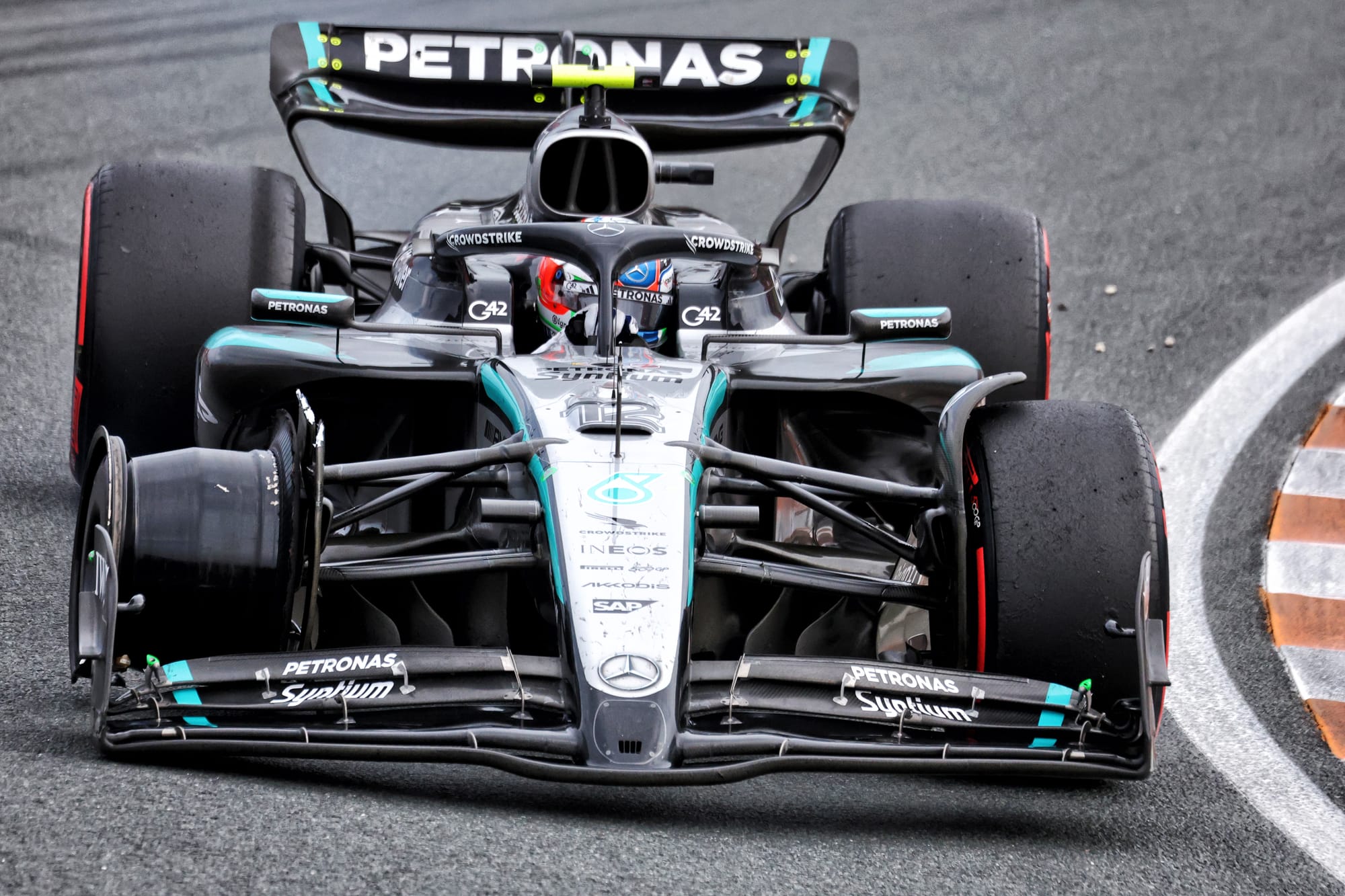
Kimi Antonelli was fertile ground for Jacques Villeneuve in his role as a Sky Sports F1 pundit at Zandvoort, first for being knocked out in Q2 in qualifying and then for crashing into Charles Leclerc in the race and picking up two penalties that dropped Antonelli out of the points.
The qualifying criticism was harsh, given Antonelli’s pace was actually competitive compared to George Russell and he had responded well to beaching his car in the gravel in FP1 and missing most of that first session.
Unfortunately, though, Antonelli’s costly misjudgement in the race ruined what had been turning into a very good drive. And Mercedes boss Toto Wolff had to wheel out the same ‘he’s young, he’ll make mistakes, he’ll improve’ arguments he’s had to resort to several times this season.
It’s not always been because of clattering into other drivers, sometimes it’s been because of a lack of pace.
But Mercedes has had to defend Antonelli more than would be ideal even for a young rookie, and he’s not been fast enough or scored enough points to get away with the odd error.
At the current rate, there’s a very real chance Antonelli gets pipped to seventh in the championship by Williams driver Alex Albon - who is now level with him on 64 points.
Colapinto could have first Alpine point

This could have been the race to end all points droughts had Franco Colapinto managed to charge into the top 10 on softs late on.
Instead, Colapinto’s still searching for his first points finish at Alpine despite his best weekend yet.
He was close to Gasly on pace in qualifying and only traffic consigned him to a Q1 exit. Then Colapinto ran a good, disciplined race and a late stop for softs put him in a great position to charge into the top 10 if the safety car ended sooner - but he was very frustrated it stayed out so long.
Even so, he could still have grabbed a point in the few remaining laps. After Gasly was passed by Esteban Ocon for 10th, he waited until the start of the next lap to move aside - but that wasn't Gasly being difficult, just adhering to a pre-race agreement that any position swaps would be into Turn 1.
That delay in getting after Ocon on much better tyres at least played a part in Colapinto being denied a much-needed points finish.
Why Sauber was suddenly nowhere

Sauber’s run of points in six consecutive events came to a juddering halt at Zandvoort, with its highest qualifier Gabriel Bortoleto in 13th and best finisher Nico Hulkenberg in 14th.
Given the Sauber C45 was quick enough to start and finish in the top 10 at both Spa and the Hungaroring before the August break, what went wrong?
While the Sauber probably could have nicked a Q3 place with a perfect lap, it was a more middling midfielder at Zandvoort.
Bortoleto suggested the car had something of a disconnected balance. A terrible start for him thanks to a clutch issue, and Hulkenberg struggling even more in qualifying, meant the Saubers finished the first lap 17th and 18th at a track where passing is extremely difficult.
Bortoleto suffering damage after a collision with Lance Stroll’s Aston Martin at the chicane and strategy calls confounded by safety car timing meant there was no way back. As team principal Jonathan Wheatley put it, Sunday was a "bad day at the office".
It’s a reminder that while the Sauber C45 is a much-improved car and capable of challenging for the top 10 more often than not, good execution and good luck contributed to its haul of 45 points in the previous six events.


